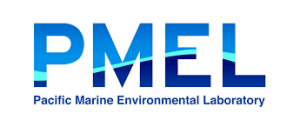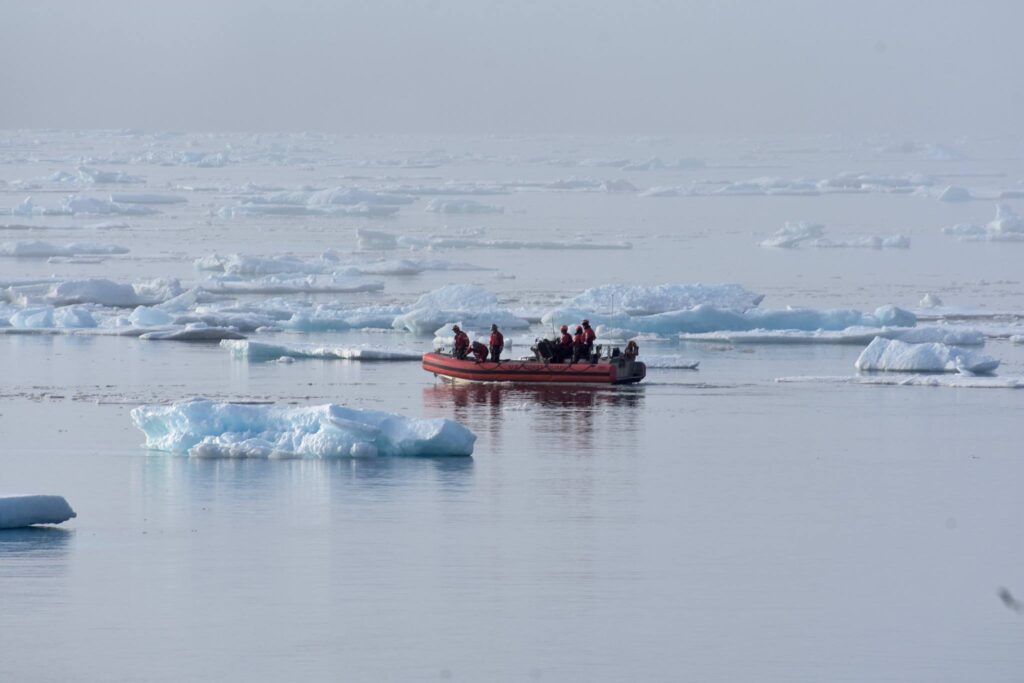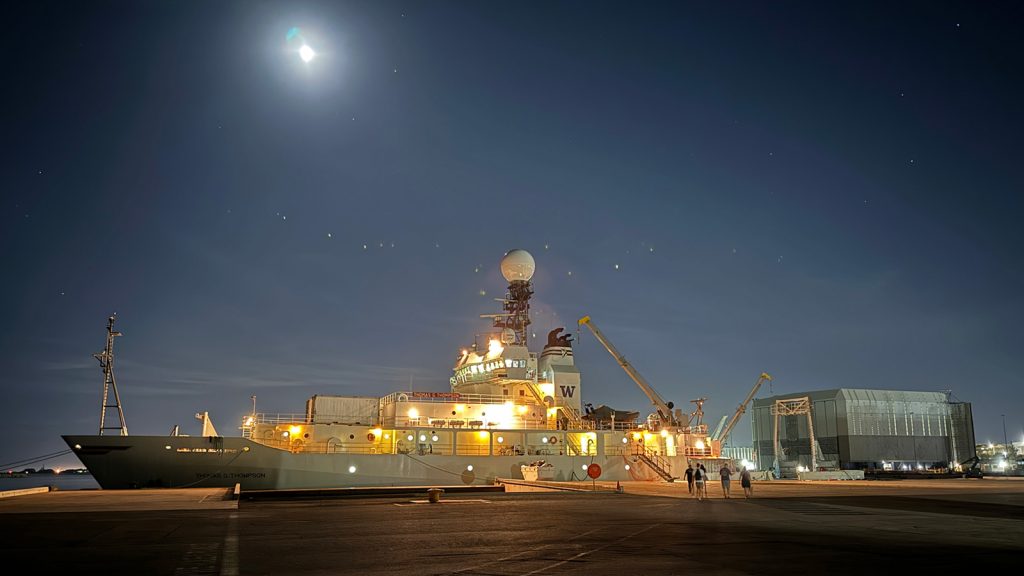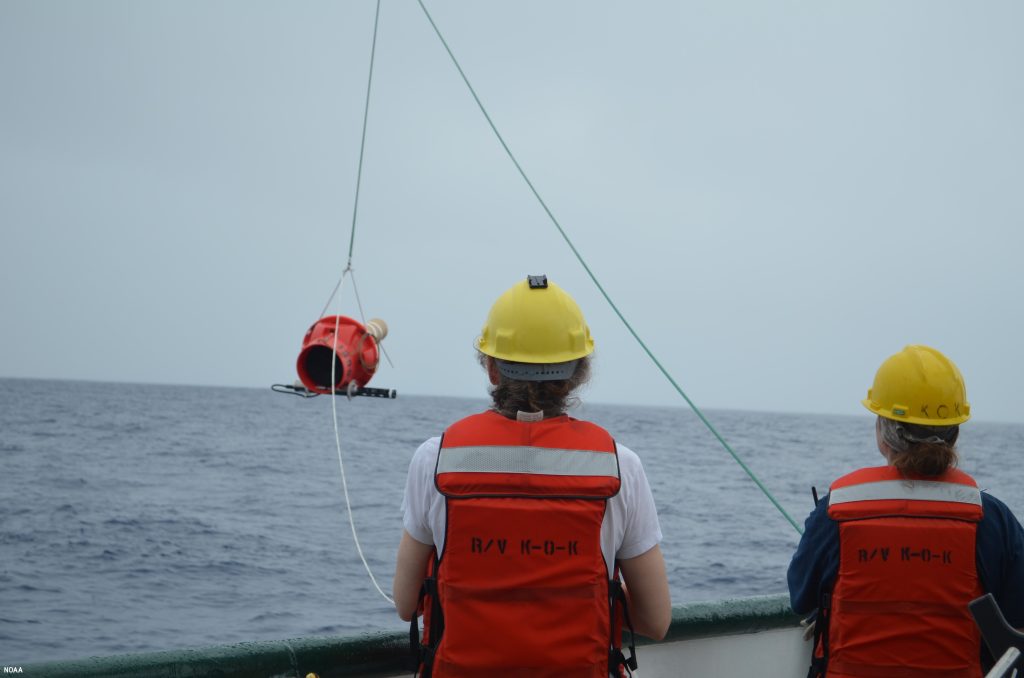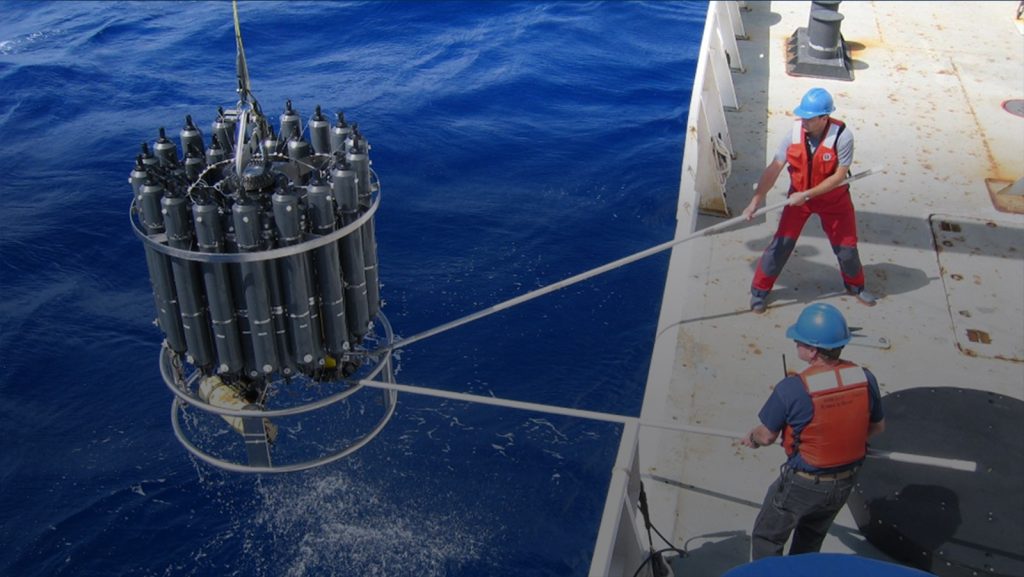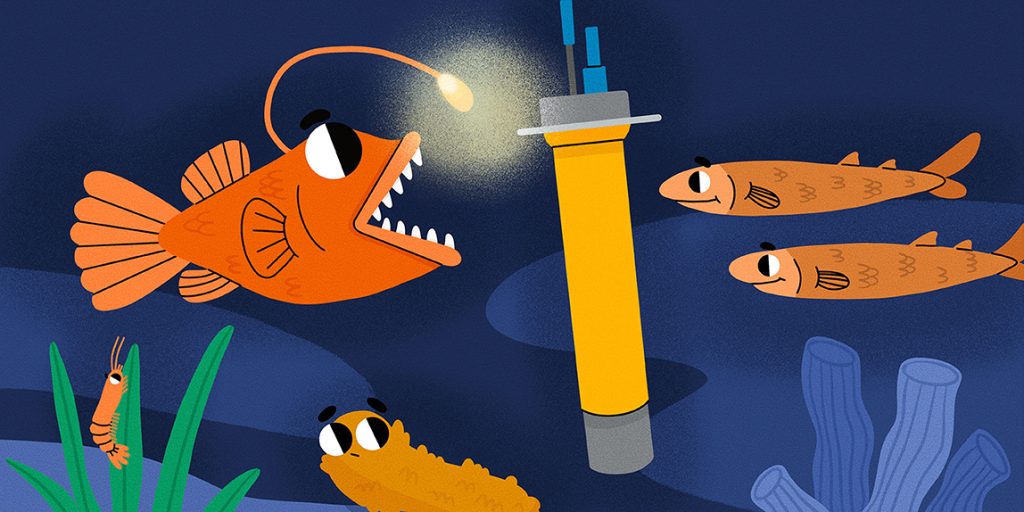
Argo Program
Argo is now the dominant source of subsurface ocean data and has a critical role in the Global Ocean Observing System
The Argo Program was developed in 1999 and today supports a global array of almost 4,000 robotic profiling floats that measure the temperature and salinity of the upper 2,000 meters (1.2 miles) of the ocean. The Argo Program has an international reach with participation from close to 30 countries. This partnership allows, for the first time, constant monitoring of the temperature, salinity, and currents of the upper ocean.
Two new types of Argo floats are now being tested to dive down to a depth of 6,000 meters (3.7 miles) and to have additional sensors on them to collect information about the biology and the chemistry (oxygen, pH, nitrate, suspended particles, and downwelling irradiance) of the global ocean. Argo floats work on a 10-day cycle (see diagram). After 10 days, the floats rise to the ocean surface and send their data to satellites. This data is publicly available within hours after collection and used in research and forecasting across the globe.

Fun Fact: The Argo Program is named after the Greek mythical ship Argo (captained by Jason) to emphasize the complementary relationship of Argo with the Jason satellite altimeters. Image Credit: Woods Hole Oceanographic Institution
Understanding the Ocean’s Role in Earth’s Climate
Argo helps us observe our changing climate
- Argo provides scientists with measurements of the evolving state of the upper ocean by collecting temperature and salinity profiles from the surface to 2,000 meters depth.
- Real-time Argo data improves weather and climate forecasts through the assimilation of Argo data in ocean and coupled (ocean and atmosphere) forecast models.
- Using Argo measurements, scientists can calculate how and where ocean heat content is changing. Since seawater expands as it warms, its contribution to sea level rise can also be estimated.
The Argo Program: Revolutionizing Global Ocean Science
NOAA’s Global Ocean Monitoring and Observing Program is a leader in the international Argo Program and currently supports new investments to develop floats that can measure the deep ocean and ocean chemistry, helping us better assess ocean health globally. The Argo Program has revolutionized our ability to track changes in the ocean with a global array of autonomous profiling floats, providing nearly four times the ocean information as all other observing tools combined.
Visualizing Argo Data
The Scripps Institution of Oceanography provides a list of Argo data sources. Data is collected and freely distributed by the International Argo Program and national programs that contribute to it. Click the link below to learn more.
Argo Program News & Resources
Biden-Harris Administration, NOAA invest $1.8 million to expand critical ice and ocean observations in the Arctic
Expanded infrastructure could ‘revolutionize’ research in the Bering, Chukchi and Beaufort Seas. This is a…
Floating ice, freezing temperatures: Four facts about the I08S GO-SHIP cruise to Antarctica
This is a repost of NOAA AOML’s original story published May 2, 2024. Floating ice, freezing…
Biden-Harris Administration invests $2.7 million to improve ocean observations with new robotic floats through Investing in America agenda
Funding will support expansion of the Argo ocean observing system This is a repost of…
From Mississippi to Australia: 3 Research Cruises Depart to Improve Understanding of the Atlantic and Southern Ocean
This is a repost of NOAA AOML’s original story published February 13, 2024. Scientists at…
New Education Resource: “Keeping An Eye On Earth’s Oceans With Argo Robots”
GOMO-funded tech highlighted in Frontiers for Young Minds A new article was released in the…
Scientists Team with Commercial Shipping Industry to Collect Ocean Observations in the Caribbean Sea
Five autonomous profiling floats were deployed from a commercial vessel into the depths of the…
Do Your Part in Advancing Ocean Science
We support innovative research from institutions from around the country that foster advancements in understanding and protecting our global oceans. See how you can get involved by viewing our current funding opportunities.


